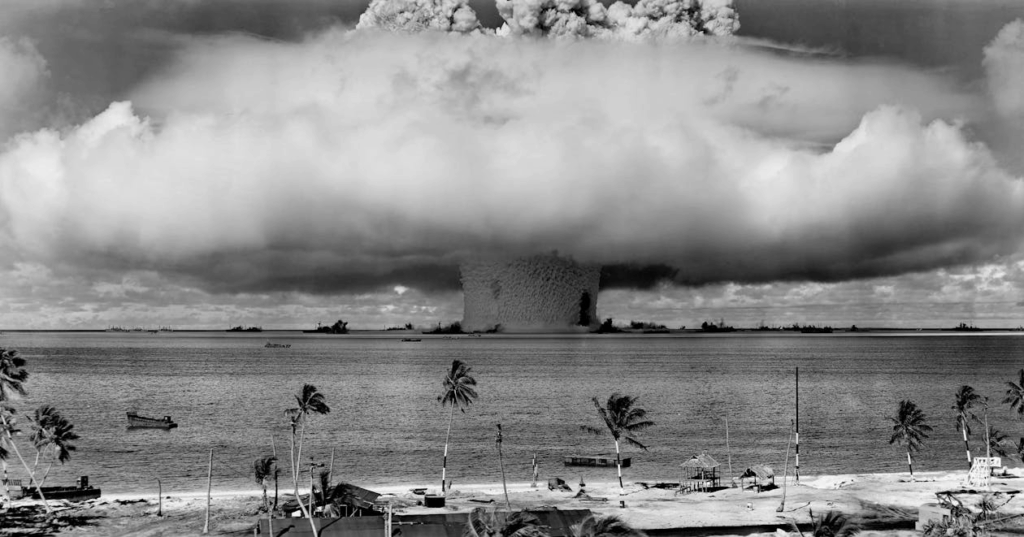An expert has identified the one area where you might survive the end of the world, despite the fact that a nuclear war would be catastrophic and spread radiation to almost every part of the planet.
Investigative journalist Annie Jacobsen outlined the reasons why Americans should think about fleeing to Australia or New Zealand in order to escape the terrible effects of World War III.
“After a nuclear disaster in the northern part of the world, the only countries that could’sustain agriculture’ would be the neighbouring countries in the Southern Hemisphere,” Jacobsen stated on The Diary of a CEO podcast.
Americans are concerned that a weapon of mass destruction could detonate at any time due to Iranian sleeper cells in the US as the Middle East conflict continues to rage.
Iran-Israel ceasefire negotiations, however, seem to be at a standstill, with both parties already accusing the other of breaching a precarious truce.

Nuclear-powered Iran’s allies, China and Russia, have already issued warnings that the United States’ involvement in the Middle East crisis might plunge the entire globe into a full-scale warfare that could result in Armageddon.
In an interview with podcast host Steven Bartlett, Jacobsen talked about the terrifying scenario in which a nuclear war would wipe out most of Earth.
“Places like Iowa and Ukraine would be just snow for 10 years. So agriculture would fail and when agriculture fails, people just die,” Jacobsen warned.
“On top of that, you have the radiation poisoning because the ozone layer will be so damaged and destroyed that you can’t be outside in the sunlight,” Jacobsen said during the 2024 podcast.
“People will be forced to live underground. So you have to imagine people living underground, fighting for food everywhere except for in New Zealand and Australia,” she continued.
Jacobsen published a book titled Nuclear War: A Scenario before the Middle East issue ever worsened. In it, he described in startling detail how World War III would bring about the end of the world.
“Hundreds of millions of people die in the fireballs, no question,” she told Bartlett.
The bulk of the world’s population would soon be consumed by the death toll, according to a 2022 study published in Nature Food by Professor Owen Toon, Jacobsen added.
“Professor Toon and his team… sort of updated [the] nuclear winter idea based around food, and the number that they have is five billion people would be dead,” Jacobsen said.
The extreme, protracted global cooling that would follow a major nuclear conflict is known as “nuclear winter.”
Nuclear bombs dropped on numerous cities during a full-scale conflict would result in massive fires that would burn buildings, woods, and other infrastructure.
Because rain cannot remove it, the smoke and soot from these fires would ascend high into the sky and enter the stratosphere, a region of the atmosphere where they can remain for years.
Like a huge shade over the world, this dense coating of soot would prevent sunlight from reaching the surface.
The Earth would get significantly colder if there was less sunshine. Temperatures in the United States would drop by about 40 degrees Fahrenheit, rendering farming unfeasible, according to the experts Jacobsen consulted for her book.
Starvation and severe food shortages would result from this cold and darkness. The survival of fish and animals would also be hampered, thus reducing the amount of food available.
“The population of the planet currently is what, eight billion?” Bartlett said.
“So there’d be three billion people still alive. Where shall I go to be one of the three billion? I was just in New Zealand and Australia,” the host mentioned.
“That’s exactly where you’d go. According to Toon, those are the only places that could actually sustain agriculture,” Jacobsen replied.
In addition to the fact that both countries can produce food after a nuclear conflict, there are a number of other reasons why Australia and New Zealand are a refuge from the devastation of the rest of the world.
They are far from China, Russia, and the United States, the three main nuclear-armed nations that are most likely to start a global conflict.
Because they are island nations, the fallout from nuclear explosions up north is limited by their isolation in the Pacific and Southern Oceans.
This is due to the fact that most of the radioactive material would be carried away from these areas by the dominant winds and ocean currents.
The heightened prospect of a worldwide nuclear war has prompted a statewide search for America’s long-forgotten fallout shelters, which are out of reach for individuals who cannot afford to go to Australia or New Zealand.
They can serve as a safe space for anyone who survives to witness the aftermath of a nuclear explosion, even though they are not designed to withstand the first blast, intense heat, and shockwaves.
Shielding is the most crucial component of a good fallout shelter. To keep out the radiation from a nuclear explosion, a steel or concrete roof and thick walls are required.
In order to capture radioactive particles in the air, fallout shelters also require adequate ventilation and the right filters.
A pleasant location to sit or sleep, a facility to dispose of waste so you don’t contaminate clean supplies, and enough food and clean water to endure for weeks or months while the radiation purges the air are all necessities for those within.





